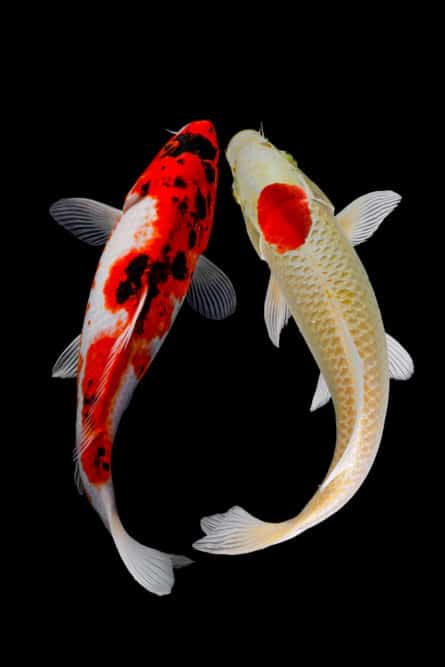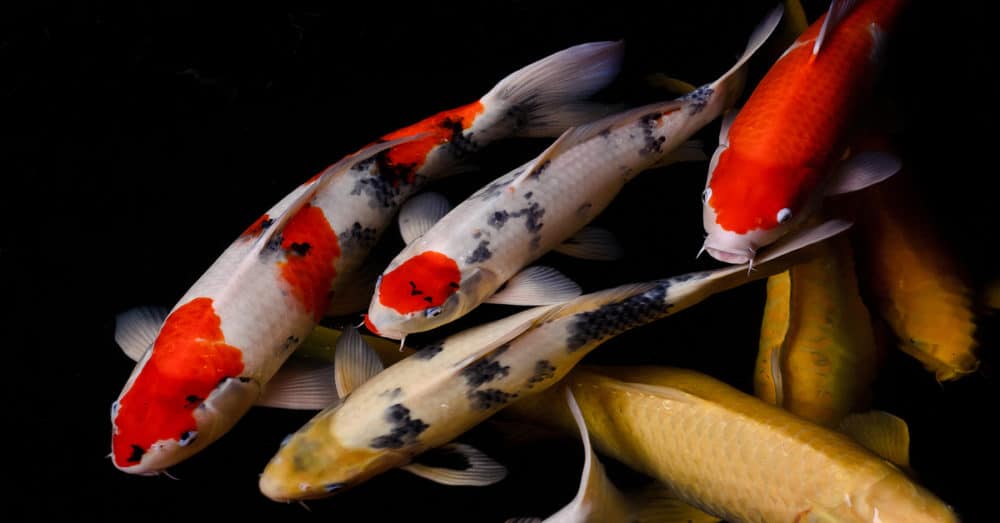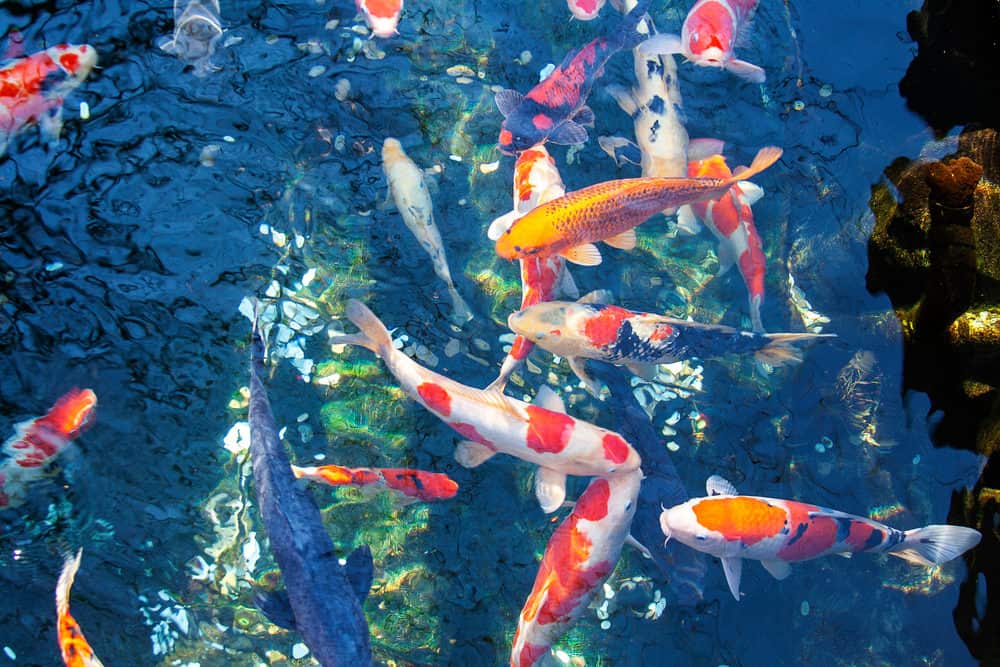Doitsu koi fish are a popular type of koi species that add variety and vibrancy to any koi pond. This type of koi is not your typical Japanese koi, but has its roots in Germany’s food and agriculture industry. “Doitsu” means “German” or “Germany” in Japanese.
Germany used to export Doitsu koi to Japan in the early 1900s. Since these fish were scaleless, they were easier to prepare and eat. However, people became drawn to the unique scaleless characteristics of Doitsu koi, and they eventually became popular pets.

Doitsu koi can be an expensive investment, so it’s important to know how to select one and care for it.
You can actually find doitsu koi for sale by checking out or koi providers directory. Here, you'll find local and online koi fish providers who can meet your needs.
We love and appreciate this beautiful carp. Therefore, we did the research so that you’ll know how to help them thrive in your koi pond or aquarium.
We’ll go over what a Doitsu version of koi is and how to choose a healthy one. Then, we’ll share valuable tips for taking care of them.
Doitsu koi are a type of koi that lacks scales. Doitsu koi are scaleless due to a genetic mutation, fgfr1, that causes a partial to complete loss of scales.
There are two main categories of Doitsu koi--Kagami koi and Kawas koi.
Kagami koi, or mirror carp, are Doitsu koi with lines of scales that run along the back and lateral line of the fish.
Kawas koi, or leather carp, have either no scales or one line of scales that run along the dorsal fin.
Today, there are many Kagami and Kawas koi varieties. There are many varieties because breeders can crossbreed this scaleless carp with almost any other koi variety.

Doitsu koi can add beautiful variety to your koi pond. There are several things to look for when looking for a new Doitsu koi.
If you find a healthy koi and take good care of it, it can live around 25 - 35 years.
First, look for general abnormalities and health concerns. Make sure that the koi don’t have any missing fins and discolored skin or gills. Look for any discolored mucous covering any part of the fish, particularly the mouth, eyes, and dorsal area. Also, check the koi’s breathing, and avoid any that have shallow breathing.
Next, examine the koi’s body shape. The koi’s head should be round. Look at the width of the head at the back of the gills. This width should be the same length as the distance from the koi’s nose to its gills.
The body should be torpedo-shaped and uniform on both sides. It shouldn’t be too round or too narrow.
The koi’s skin should be bright and even. It shouldn’t have any discoloration and bruises.
Judges will typically look more closely and critically at Doitsu koi scales than a scaled koi. They are more particular about Doitsu koi’s scales because this type of koi doesn’t have many scales.
The most aesthetically pleasing scale arrangement is evenly sized scales that line up in a straight line.

Different types of koi have other coloration criteria. When you look for koi, make sure to refer to their specific pattern criteria so that your new koi can closely match it.
The pattern is more subjective and dependent on personal preferences. Personal preference also plays a role in competitions that judge koi. Therefore, don’t disregard your tastes, and find a beautiful fish that’s personally appealing to you.
The price of koi ranges quite a bit. You can find a koi farm selling small and young koi at prices as low as $10. For a healthy koi, you can expect to pay up to about $400. The price typically increases by the breeder’s reputation.
Some breeders also sell luxurious koi that can cost tens of thousands of dollars or more. The current record for highest-selling koi is $1.8 million.
Bringing home a new koi can be expensive. Therefore, it’s important to care for them so that they can live many happy years.
Koi have specific water requirements, such as temperature, salinity, and pH levels. Here are some general guidelines for water quality:
Your koi pond should also have a proper filter system so that your koi are swimming in clean and clear water. You can also install a water feature, such as a waterfall, to help with re-oxygenating the water.

The type of food koi eat depends on circumstance. As a general rule of thumb, look for food with fish protein as the first ingredient. Examples are a fish meal, whitefish, or anchovy meals.
The size of the food will depend on the koi’s age. Baby koi should eat flakes. Pellets are appropriate for young or medium-sized koi. You can also feed bars, which are best for large koi.
A common mistake that many beginner koi owners make is overfeeding. Feed your koi as much as they can eat for five minutes while slowly distributing the food. You can feed your koi up to three times a day.
Doitsu koi’s nutrition preferences also change with the seasons. They will crave more protein-rich foods in the spring when it’s mating season. In the fall, they will benefit from carbohydrates as they prepare for winter.
Koi can eat many different kinds of food. However, there are some foods to avoid:

Because Doitsu koi lack scales, they can be more sensitive to infections, parasites, and sunburn. Fortunately, most of these scaleless koi will typically show visual signs that they’re not feeling well. Their skin color will change, so keep an eye out for discolorations. For example, white spots on a koi may turn to yellow.
Sick Doitsu koi may also swim differently. Their speed can change, and they may be unstable or wobbly.
Monitor your koi pond daily. Quarantine sick koi, so they don’t spread any bacteria, parasites, or viruses to the others. Consult with a veterinarian to receive a proper diagnosis and treatment.



